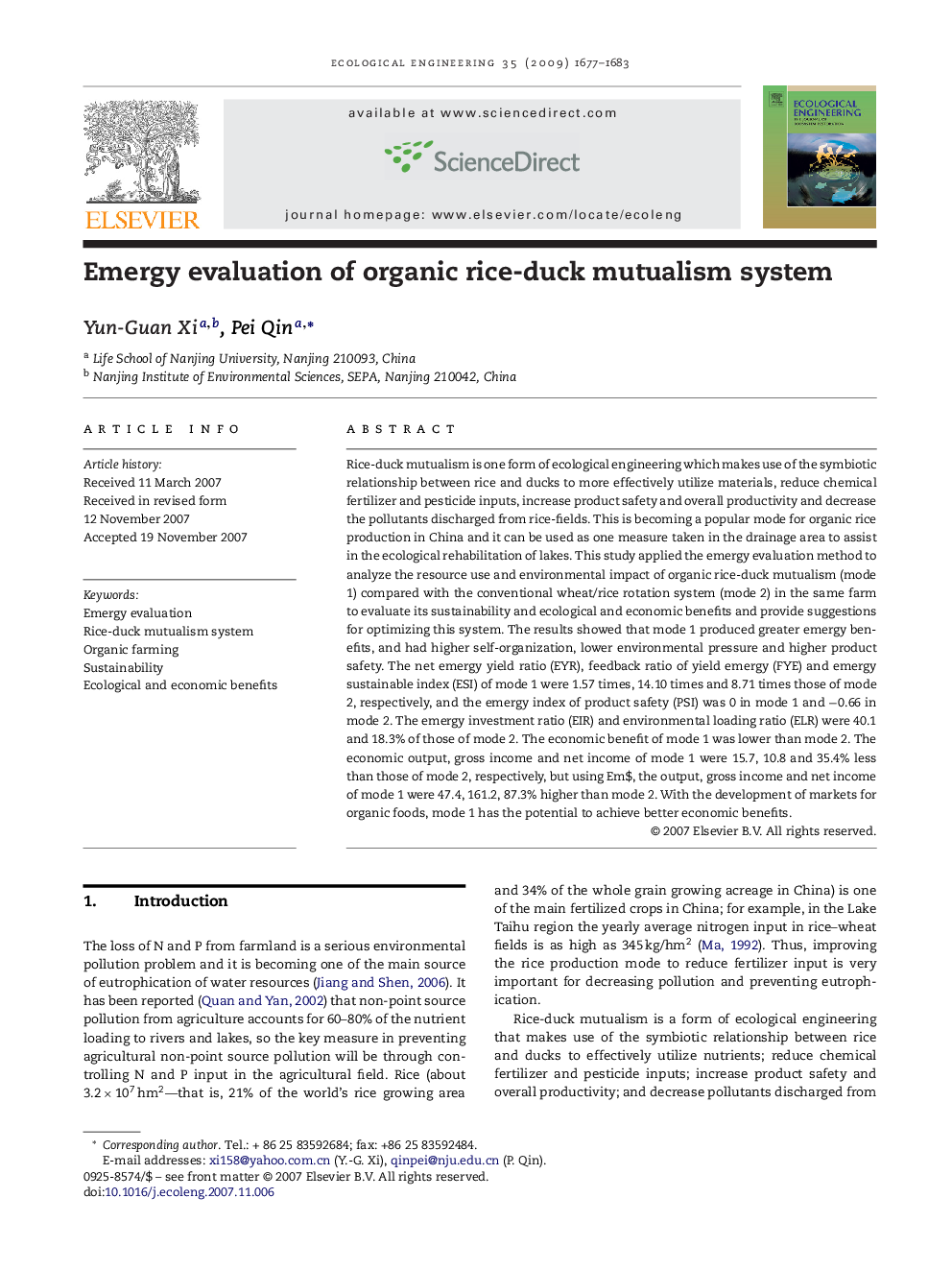| Article ID | Journal | Published Year | Pages | File Type |
|---|---|---|---|---|
| 4390514 | Ecological Engineering | 2009 | 7 Pages |
Rice-duck mutualism is one form of ecological engineering which makes use of the symbiotic relationship between rice and ducks to more effectively utilize materials, reduce chemical fertilizer and pesticide inputs, increase product safety and overall productivity and decrease the pollutants discharged from rice-fields. This is becoming a popular mode for organic rice production in China and it can be used as one measure taken in the drainage area to assist in the ecological rehabilitation of lakes. This study applied the emergy evaluation method to analyze the resource use and environmental impact of organic rice-duck mutualism (mode 1) compared with the conventional wheat/rice rotation system (mode 2) in the same farm to evaluate its sustainability and ecological and economic benefits and provide suggestions for optimizing this system. The results showed that mode 1 produced greater emergy benefits, and had higher self-organization, lower environmental pressure and higher product safety. The net emergy yield ratio (EYR), feedback ratio of yield emergy (FYE) and emergy sustainable index (ESI) of mode 1 were 1.57 times, 14.10 times and 8.71 times those of mode 2, respectively, and the emergy index of product safety (PSI) was 0 in mode 1 and −0.66 in mode 2. The emergy investment ratio (EIR) and environmental loading ratio (ELR) were 40.1 and 18.3% of those of mode 2. The economic benefit of mode 1 was lower than mode 2. The economic output, gross income and net income of mode 1 were 15.7, 10.8 and 35.4% less than those of mode 2, respectively, but using Em$, the output, gross income and net income of mode 1 were 47.4, 161.2, 87.3% higher than mode 2. With the development of markets for organic foods, mode 1 has the potential to achieve better economic benefits.
